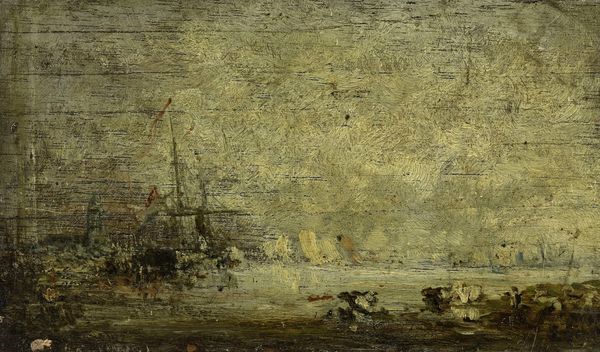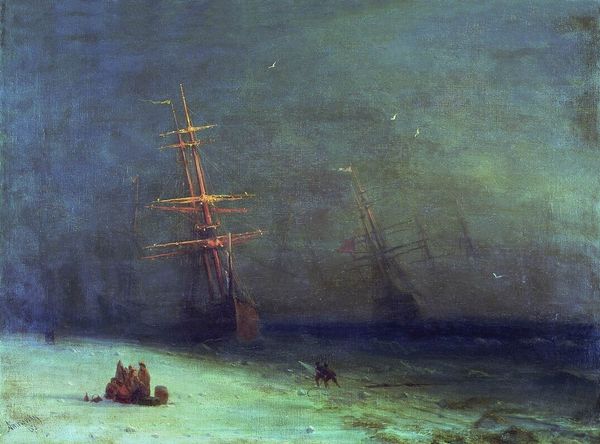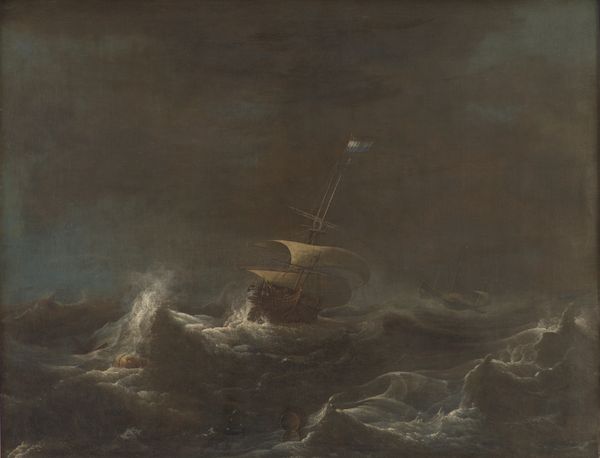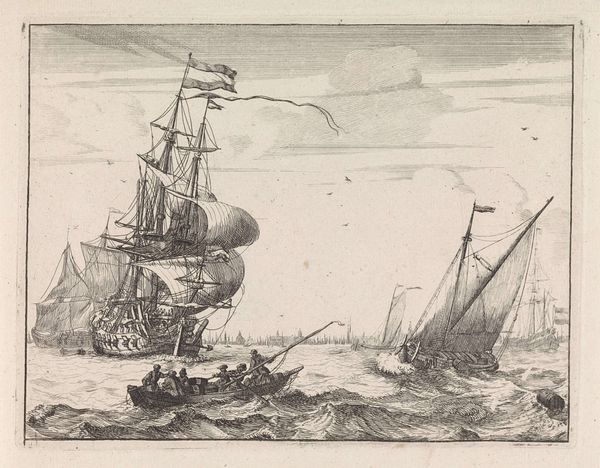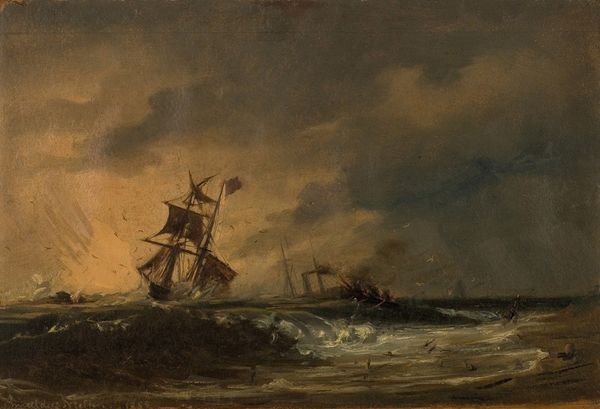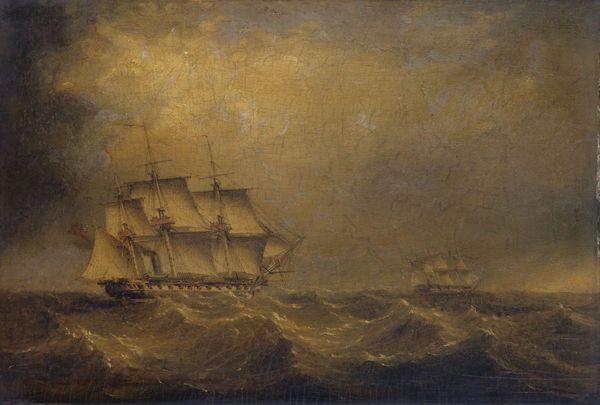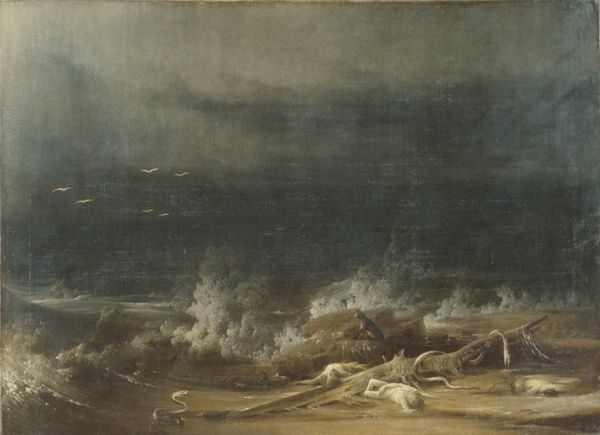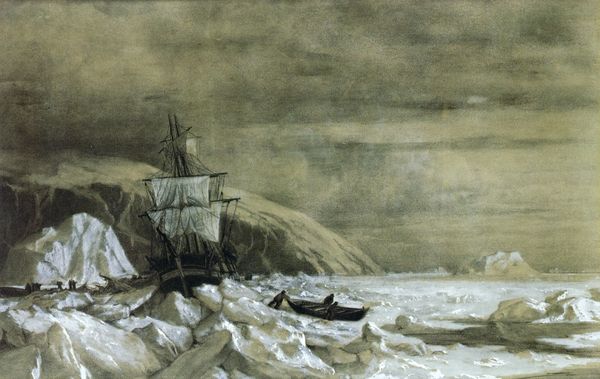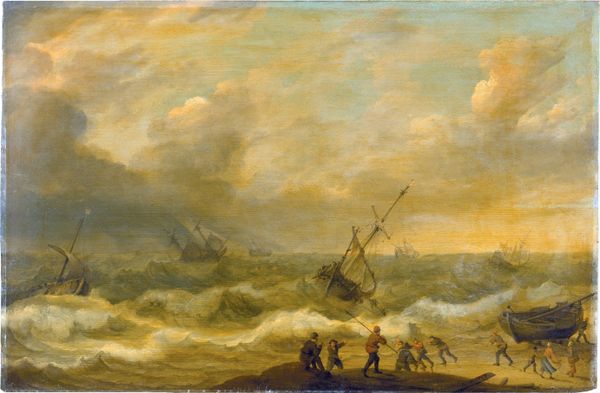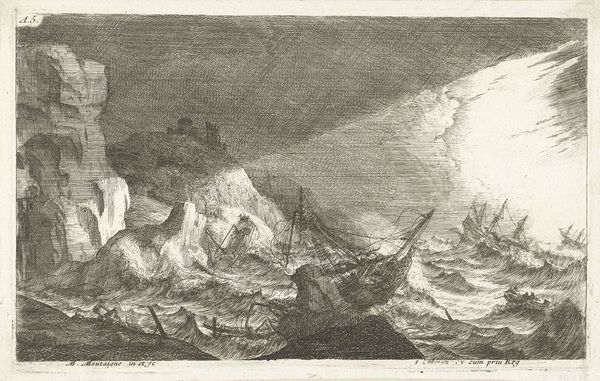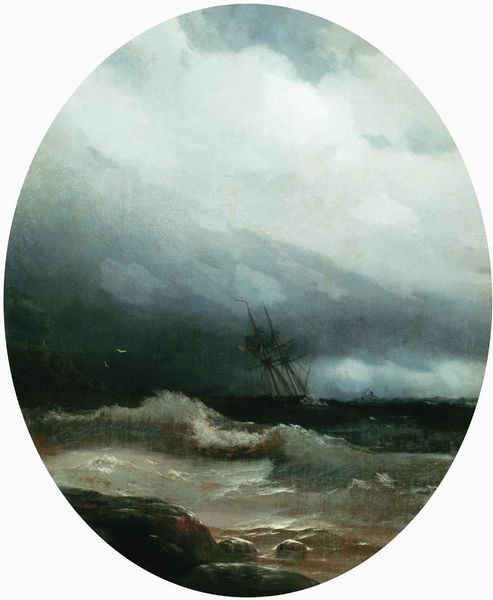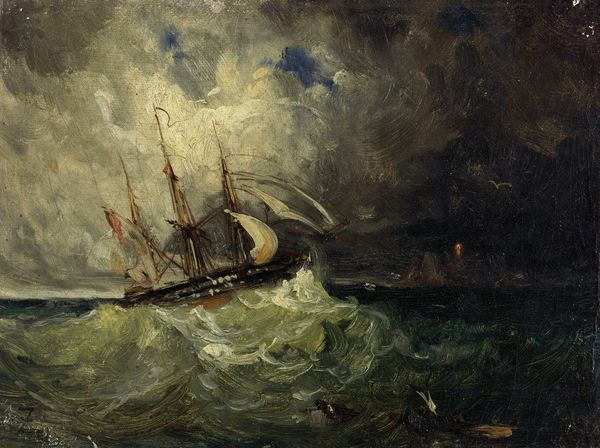
oil-paint
#
baroque
#
oil-paint
#
landscape
#
oil painting
#
genre-painting
Dimensions: height 38 cm, width 106.5 cm, depth 6.5 cm
Copyright: Rijks Museum: Open Domain
Curator: Ah, here we have "Ships in a Storm" an oil painting created sometime between 1600 and 1652, by the Flemish artist Andries van Eertvelt. Editor: It's wonderfully gloomy! I can almost feel the salt spray. The lighting feels oppressive, like a punishment from the heavens. Curator: Notice the composition, though. Despite the chaos of the waves, Eertvelt employs a strong diagonal line that pulls the viewer's eye into the heart of the storm. Symbolically, water often represents the unconscious, doesn't it? So here, the storm could be seen as the turmoil of the mind, or perhaps a wider social unrest. Editor: Ooh, I like that! It really amplifies that sense of dread, doesn't it? And the tiny figures on the ships, battling against the elements... Talk about existential! Are they even visible at that distance? It really is more about the overwhelming power of the sea against human vanity, right? Curator: Indeed. It fits squarely within the genre of marine painting so popular during the Baroque era. It captures not just the visual spectacle but also the anxieties of a culture deeply reliant on maritime trade and exploration, yet constantly reminded of its vulnerability. Editor: I keep getting pulled in to the color palette – there is this beautiful blend of earth and ocean hues. It makes the scene almost tactile. A constant back and forth: warm colors, promising horizons… but darkness takes over, engulfing everything with dread. Makes me wonder, how would it feel being at that ship right now? What stories do their captain, its crew, their lives tell us about the fear and vulnerability during those long, indefinite days at sea? Curator: Those limited yet effective brushstrokes and those heavy tonal shifts amplify what I see as human frailty. Editor: Exactly, that feeling. You can see the vulnerability in those ships. Curator: Indeed. A small painting but powerful emotionally. It serves as a meditation of both individual and collective anxiety. Editor: Yes, one to contemplate and perhaps learn something about facing one’s personal tempests!
Comments
No comments
Be the first to comment and join the conversation on the ultimate creative platform.
